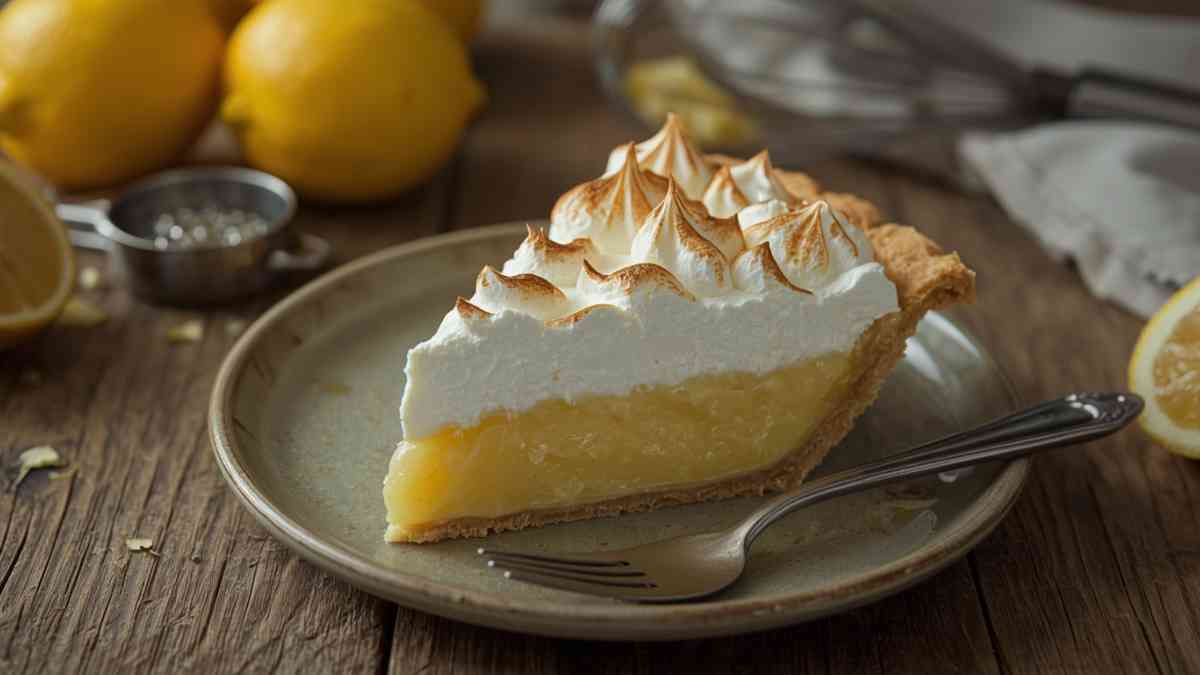Lemon Pie Mary Berry: A Zesty British Classic Demystified for Home Bakers

Few desserts embody balance quite like lemon pie Mary Berry style. It marries crisp pastry, tangy curd, and pillowy meringue in a single, dramatic slice. While the Great British baking icon makes it look effortless on television, many home cooks shy away, worried the curd will run or the meringue will weep. This article peels back the mystery. By the end you will understand the science behind each layer, know exactly what can go wrong (and why), and feel ready to deliver a show-stopping pie worthy of Mary’s own judging fork.
Mary Berry’s Legacy and the Rise of Lemon Pie
Mary Berry earned her reputation by translating professional techniques into approachable steps. Her lemon meringue pie has appeared in cookbooks since the 1970s and on countless episodes of her shows. What sets her version apart?
-
Simplicity of ingredients: basic pantry staples plus fresh citrus.
-
Texture precision: a shortcrust that stays crisp beneath a silky curd and a meringue that bakes to a fragile shell.
-
Reliability: clear timings and tell-tale visual cues ensure repeatable success.
Understanding why each component matters lays the groundwork for mastering the pie.
Ingredient and Equipment Checklist
Key Produce
-
Unwaxed lemons (3–4 medium)
Fresh zest is non-negotiable; bottled juice produces a flat-tasting curd.
Baking Staples
| Item | Purpose |
|---|---|
| Plain flour | Forms pastry structure |
| Cold unsalted butter | Creates flaky layers |
| Icing sugar | Delivers delicate sweetness to crust |
| Free-range eggs (4 large) | Yolks thicken curd; whites lift meringue |
| Caster sugar | Dissolves quickly in both filling and topping |
| Cornflour | Stabilises curd and meringue |
-
23 cm loose-bottom tart tin
-
Food processor (optional but speeds up pastry)
-
Heavy-based saucepan
-
Digital thermometer (for curd confidence)
-
Stand mixer or balloon whisk
-
Offset spatula for swirling meringue
Investing in quality tools reduces variables and boosts consistency.
Step-By-Step Recipe Walkthrough
1 – Crafting the Shortcrust Base
-
Pulse flour, cold diced butter, and icing sugar until the mixture resembles breadcrumbs.
-
Add one beaten egg and a teaspoon of water. Pulse briefly; over-working shrinks pastry.
-
Chill 20 minutes. Cold dough yields crisp layers.
-
Roll to 3 mm thickness, line the tin, dock with a fork, and freeze five minutes.
-
Blind-bake at 200 °C (fan 180 °C) for 15 minutes with parchment and baking beans, then five minutes bare. The shell should look biscuity-gold.
Why it works: Icing sugar’s fine grain melts quickly, preventing gritty crust. Docking limits air bubbles, and the initial high heat sets edges before butter can leak.
2 – Cooking the Bright Lemon Curd
-
Whisk cornflour, caster sugar, and lemon zest in a saucepan.
-
Slowly pour 300 ml water while whisking to avoid lumps.
-
Bring to a gentle boil, stirring; the mixture turns glossy and thick.
-
Whisk egg yolks with lemon juice separately; then temper—add a ladle of hot mixture to yolks, whisk, return everything to the pan.
-
Cook 2 minutes until bubbles sluggishly pop and a spoon leaves a clean trail.
-
Off the heat, drop in a knob of butter for silkiness.
Science spotlight: Cornflour holds liquid in a gel network, so the curd sets firm once cooled. Tempering prevents scrambling the yolks.
3 – Whipping the Glossy Meringue
-
Beat egg whites in a grease-free bowl until they form stiff peaks.
-
Add caster sugar one spoon at a time, beating well between each addition. Rushing causes grainy beads.
-
Beat in one teaspoon cornflour; it binds excess moisture, ensuring a marshmallow crumb beneath the outer shell.
4 – Assembly and Final Bake
-
Spoon hot curd into the cooled crust. Hot filling helps the meringue adhere and cook from beneath.
-
Pile meringue on top, starting at the crust edge to seal. Use swirling motions for attractive peaks.
-
Bake 18 minutes at 150 °C until the meringue is pale-gold with crisp ridges.
-
Cool completely. Cutting while warm invites a soupy middle.
Troubleshooting: Common Pitfalls and Practical Fixes
| Issue | Cause | Solution |
|---|---|---|
| Soggy bottom | Pastry under-baked or curd too hot and liquid | Extend blind-bake; ensure curd hits 82–85 °C |
| Weeping meringue | Sugar undissolved; cool filling | Beat sugar slowly; spread meringue on piping-hot curd |
| Separating layers | Steam trapped between curd and topping | Anchor meringue to crust rim all around |
| Collapsed peaks | Over-whipped then deflated whites | Stop mixing once peaks hold shape and bowl turns glossy |
Remember: every pie is feedback. Note what worked, tweak the next attempt, and mastery comes quickly.
Flavor Variations Inspired by Mary Berry
Lime-Lifted Citrus Pie
Swap half the lemon juice for fresh lime; zest both fruits. The green tinge intrigues guests and the deeper acidity cuts sweetness.
Passionfruit Twist
Stir pulp from three ripe passionfruit into the finished curd for tropical seeds and perfume.
Biscuit-Base Speed Edition
Pressed digestive biscuits mixed with melted butter replace pastry when time is tight. Chill to set before filling.
Each adaptation builds upon Mary Berry’s foundation while letting you write your own signature.
Serving Suggestions: Elevating Presentation
-
Torch the peaks for dramatic caramel freckles moments before serving.
-
Pair with crème fraîche; its sour richness echoes lemon tang without extra sugar.
-
Garnish with candied lemon peel for texture and gleam.
-
Mini tartlets score high at baby showers and afternoon teas—cute portability, same punchy flavor.
Storage, Shelf Life, and Make-Ahead Tactics
-
Short-term: Store the fully baked pie in the refrigerator, loosely covered, for up to 24 hours. Any longer and the meringue may bead.
-
Separate elements: Bake crust and prepare curd a day early; keep the curd chilled with cling film touching the surface. Whip and bake the meringue on serving day.
-
Freezing: Unsuitable once assembled; however, raw dough disks freeze beautifully for two months.
Proper planning allows stress-free entertaining.
Nutritional Snapshot (per 1/10 slice, approximate)
| Component | Amount |
|---|---|
| Calories | 340 |
| Fat | 12 g |
| Saturates | 6 g |
| Carbohydrates | 52 g |
| Sugars | 36 g |
| Protein | 5 g |
| Fibre | 1 g |
| Salt | 0.3 g |
While indulgent, the pie offers a hit of vitamin C and a morale boost on gloomy days—moderation wins.
Conclusion
Mastering lemon pie Mary Berry style is less about strict perfection and more about embracing the sensory cues that Mary herself champions: the rumble of a thickening curd, the shine of well-whipped meringue, the satisfying snap of cool pastry. Follow the logical steps, respect the chemistry, and soon this iconic British dessert will grace your table with confidence. Whether you present it at a summer picnic or a rainy-day tea, its bright flavour and textural contrast never fail to lift spirits—a testament to Mary Berry’s enduring culinary wisdom and to your growing prowess in the kitchen.



